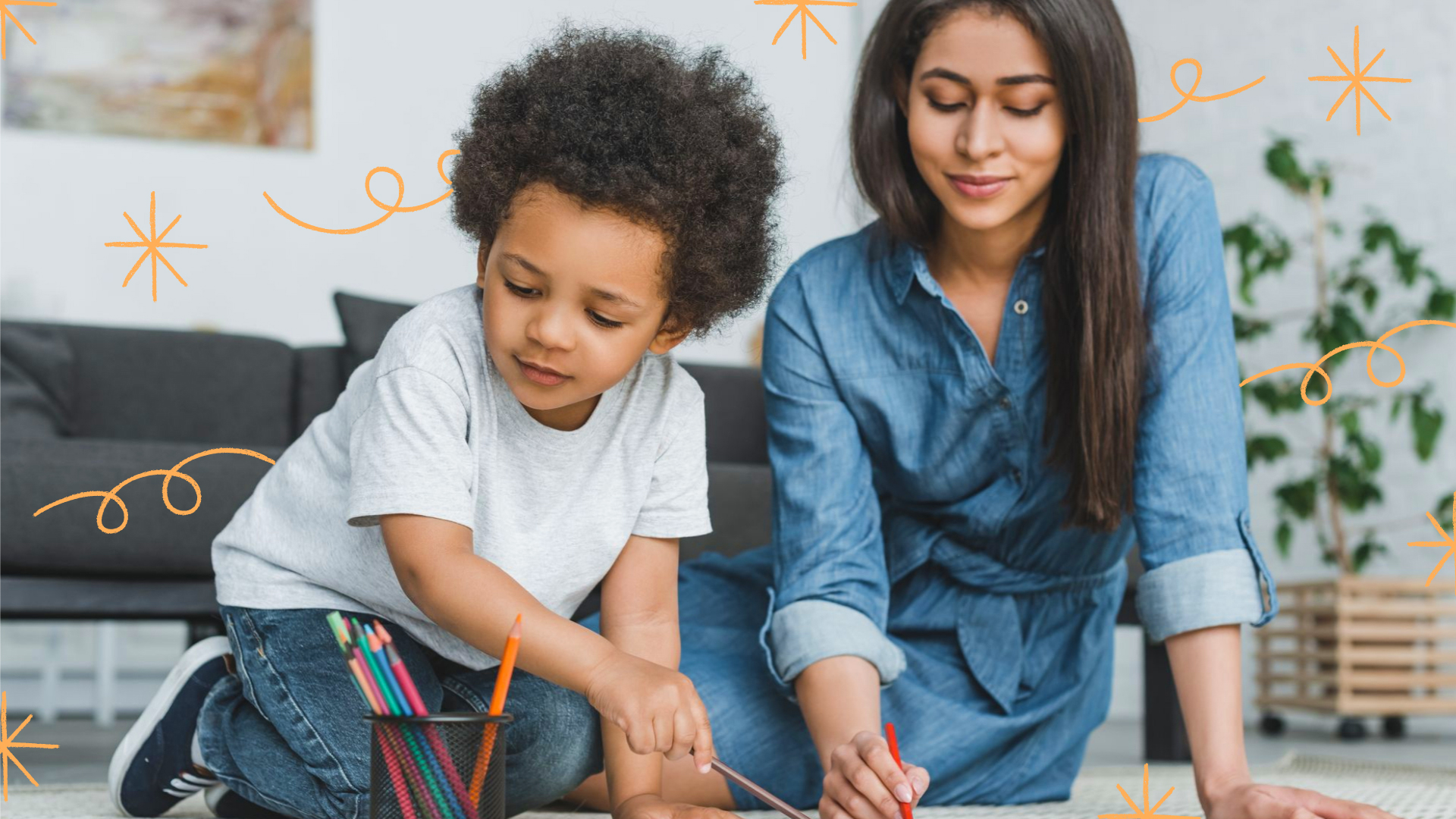
- 6 mins
10 Expert-Backed Coping Skills to Help Kids With Stress and Anxiety

Anxiety can be daunting, especially when it sneaks up on you. Kids tend to have difficulty looking back – though hindsight reflection can be a very powerful tool in supporting children with anxiety. Understanding how they were feeling in the lead-up to an anxious moment is very helpful to aid in identifying those feelings the next time.
This might be more difficult for children who are younger or nonverbal – however, they can express their feelings is a great start. Perhaps having a favorite toy act it out for you – or point to where it hurts can provide a lot of information as to how they felt. Drawing or painting can also express other feelings they may not be able to articulate. Older kids can engage with storytelling – describing symptoms as if they are part of a character can encourage an objective observation.
Self-awareness is not always a natural practice – it takes skills and repetition to gain insight into our own feelings sometimes. Regular mindfulness practice is an extremely simple way to encourage self-efficacy and self-awareness. By learning how to be mindful in the present, we are better equipped to manage feelings about the past, or anticipations about the future.
Using the hindsight tools above, further exploration can be done together. A child may remember that they had sweating palms while they were experiencing the build-up of emotion or frustration. This can open up further exploration of what else might have been going on in their mind and body at the same time. Additionally, what external factors can they recall about the last time they felt that symptom (in this case, sweaty palms.) Any tangible factor is worth exploring, as sometimes this may not be something obvious.
The emotional cues associated with anxiety can often get mistaken for disruptive behavior. These cues are how kids can learn more about the sources of their anxiety. It allows them time to flag when it is becoming overwhelming. The goal is to enable kids to check, collect, challenge and accept negative feelings they have. This, in turn, helps them manage their feelings better.
Reassurance that no matter what, you are there to support them. This is true for any parent, teacher, caregiver, or sibling. A safe person to speak to when we are feeling vulnerable is a priceless well-being resource at any age. Quiet time together can also encourage the understanding that there is nowhere to be and nothing to worry about during that time. Excess worries can find the space to lift and relieve the pressure when there are no other inputs to manage.
Language can play a very powerful role when discussing emotions, as they are so complex and individual. Furthering a conversation will involve expanding their vocabulary which will need your encouragement and assistance to grow.
Acknowledging how they are feeling is also important to ensure their experience is validated and deemed acceptable by that safe person. Although you may not be able to step into their shoes, you can certainly let them know that what they are feeling is real. Remind them that they will be treated with respect and kindness.
Draw up a wheel that has pie slices of every coping skill identified that could be helpful in a stressful moment. This is a key reference point for intervention, to start coping strategies prior to anxiety taking hold. Ages 5+.
Go Zen is a guided program in building resilience, designed for children and teens.
Practical Strategies
This book, Freeing Your Child from Anxiety, Revised and Updated Edition: Practical Strategies to Overcome Fears, Worries, and Phobias and Be Prepared for Life, from Toddlers to Teens by Dr Tamar Chansky, is a hands-on guide full of practical advice.
Designed for discussing triggers at school, this template can be adapted to suit any situation at home, work, school or social environment.
This guide from Mentally Healthy Schools provides easy to follow exploratory questions to help you create individual action plans
And, of course, Moshi!
Moshi has a plethora of tools to help support children with anxiety. Our bite-sized moments are created specifically to help children recenter during moments of stress and anxiety. Some of our favorites include Anxiety Be Gone with Yana and ShiShi’s Soothing Anxiety Shrinker. Try ShiShi out below!